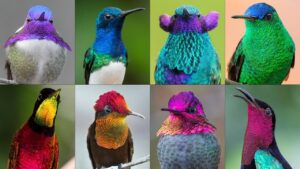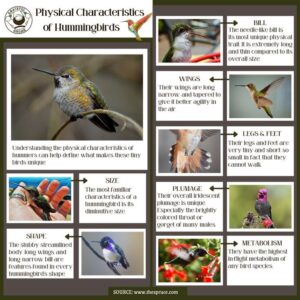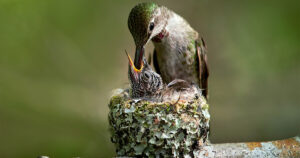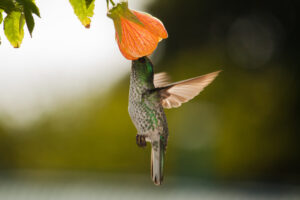
The Marvel of Miniature Magnificence: Physical Traits

First and foremost, let’s marvel at their physical attributes. Hummingbirds are among the smallest birds on the planet, with some species measuring just a few inches in length. Despite their diminutive size, they possess an incredible array of adaptations that make them formidable flyers. Their wings beat at an astonishing rate, often exceeding 80 times per second, allowing them to hover effortlessly and even fly backward.
One of the most striking features of hummingbirds is their vibrant plumage. Their feathers shimmer with a rainbow of colors, thanks to microscopic platelets that refract light, creating an iridescent effect. From the brilliant reds of the Ruby-throated Hummingbird to the shimmering greens of the Anna’s Hummingbird, each species boasts its own unique palette.
A Gourmet’s Delight: Feeding Habits

Hummingbirds are not just visually stunning; they are also voracious eaters. Their high-energy lifestyle demands a constant supply of fuel, primarily in the form of nectar. With their long, specialized bills and extendable, tube-like tongues, they are perfectly adapted to sip nectar from flowers with surgical precision.
But hummingbirds are not solely reliant on nectar. They also supplement their diet with insects, which provide essential proteins and nutrients. Their agile flight allows them to snatch insects mid-air with remarkable accuracy, showcasing their predatory prowess.
The Circle of Life: Reproduction and Migration

Like all living creatures, hummingbirds partake in the timeless dance of reproduction. During mating season, males engage in elaborate courtship displays, performing aerial acrobatics and vocalizations to woo potential mates. Once a pair has bonded, the female takes sole responsibility for building the nest and rearing the young.
Hummingbird nests are marvels of engineering, constructed from spider silk, plant fibers, and other organic materials. Despite their delicate appearance, these nests are remarkably sturdy, providing a safe haven for the precious eggs and hatchlings.
Migration is another remarkable aspect of hummingbird life. While some species are resident year-round in their native habitats, others embark on epic journeys spanning thousands of miles. These migrations are fueled by an innate sense of navigation and a relentless drive to find suitable breeding grounds and food sources.
The Fragile Balance: Conservation Challenges

Despite their enchanting allure, hummingbirds face numerous threats to their survival. Habitat loss, climate change, and pesticide use are among the greatest challenges they confront. As human activity continues to encroach upon their habitats, these remarkable creatures find themselves increasingly vulnerable.
Conservation efforts are crucial to ensuring the long-term survival of hummingbirds and the ecosystems they inhabit. By protecting their habitats, promoting sustainable gardening practices, and raising awareness about their plight, we can help safeguard the future of these irreplaceable treasures.
Final Thoughts: A Testament to Resilience

In a world filled with complexities and uncertainties, hummingbirds serve as a poignant reminder of the beauty and resilience of the natural world. Despite their diminutive size, they possess a spirit and tenacity that inspire awe and admiration.
So, the next time you catch a glimpse of a hummingbird darting through the air, take a moment to appreciate the marvel of nature unfolding before your eyes. In their fleeting presence, we find a profound connection to the wonders of the universe and a renewed sense of wonderment for the world around us.


